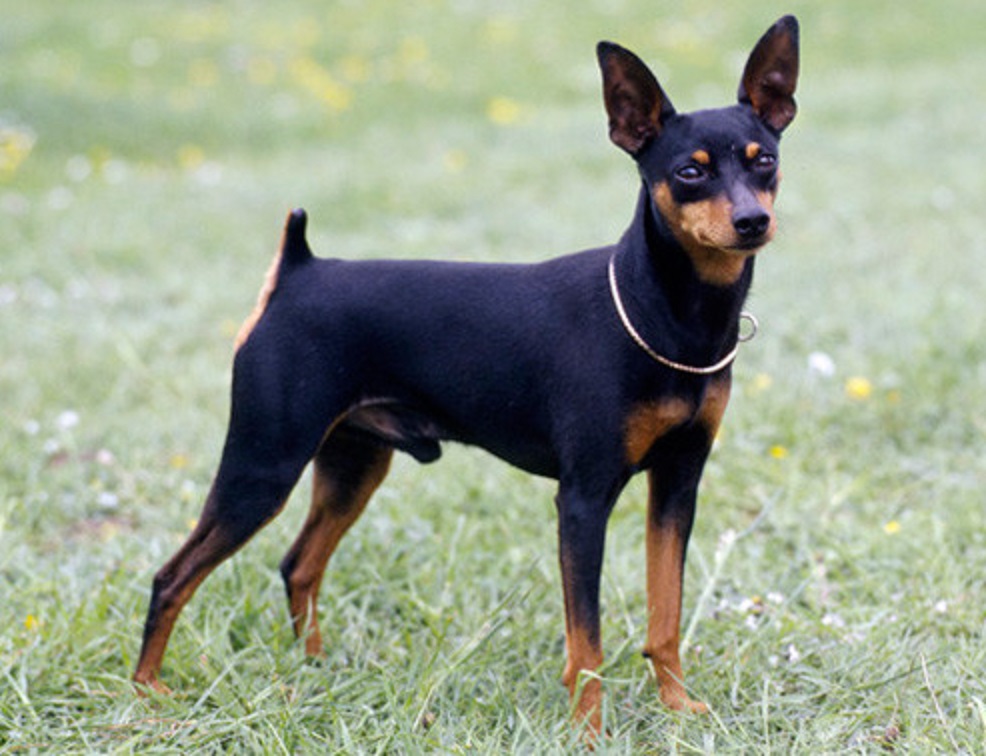
Miniature Pinscher

Navigate through the tabs
Navigate through the tabs below to view the breed's info of your interest.
The breed's info is divided in four sections; namely:
the breed's history ,
the breed's main stats ,
the dog's potential health issues
and finally, how the breed scored in 26 different categories.
All the above information should give you a respectively good overview for the dog of your interest.
Dog Breed's Main Info
The Breed's History:
The Miniature Pinscher is thought to be an old breed, but documentation can only trace it reliably back several hundred years. It was developed in Germany to kill rats in homes and stables.
There it was first called the Reh Pinscher because of its supposed similarity to the reh, or small deer, that used to inhabit Germany's forests. Many people think that the Miniature Pinscher was developed as a mini Doberman, but though he looks similar, he's a distinct and much older breed.
Development of the Miniature Pinscher took off in 1895 when German breeders formed the Pinscher Klub, later renamed the Pinscher-Schnauzer Klub. It was then that the first breed standard was written. Miniature Pinschers were first shown at the Stuttgart Dog Show in Germany in 1900, at which time they were virtually unknown outside of their homeland.
From 1905 until World War I, the Miniature Pinscher rapidly grew in popularity in Germany. After World War I, breeders in Germany and also in the Scandinavian countries worked to improve the line. Around 1919, the first Miniature Pinschers were imported in the United States. Only a few were shown in American Kennel Club dog shows at first. But by 1929, the Miniature Pinscher Club of America, Inc., was formed.
Also in 1929, the AKC recognized the breed. At that time Min Pins were shown in the Terrier group. In 1930, they were reclassified as Toys and called Pinscher (Miniature). They were renamed Miniature Pinscher in 1972.
Country of Origin:
Germany
Breed Group:
Companion
Height:
10 inches to 1 foot (25,4 to 30,48 cm)
Weight:
8 pounds to 11 pounds (3,62 to 4,99 Kg)
Life Span:
10 to 14 years
Potential Health Issues:
Legg-Calve-Perthes Disease,
Epilepsy,
Hypothyroidism,
Progressive Retinal Atrophy (PRA),
Patellar Luxation
Adaptability
Apartment Living:
First Time Owners:
Sensitivity:
Being Alone:
Cold Weather:
Hot Weather:
Friendliness
Affection With Family:
With Kids:
With Dogs:
With Strangers:
Health and Grooming
Shedding:
Drooling:
Easy To Groom:
Overall Health:
Weight Gain Potential:
Size:
Training
Easiness:
Intelligence:
Mouthiness:
Prey Drive:
Barking or Howling:
Wanderlust:
Need For Exercise
Energy Level:
Intensity:
Exercise Needs:
Playfulness:
Our Mobile Application
Check out Our Mobile Application "Dog Breeds Central"
